
Dave MacLeod has made the third ascent of Neil Gresham's Lexicon (E11 7a) at Pavey Ark, Cumbria. The route shares the start of Impact Day E8 6c up to a break, before leading straight up an overhanging headwall on small crimps with marginal footholds.
In 2006, Dave made the first ascent of Rhapsody at Dumbarton Rock, grading it E11 7a — the first of its grade in the world (UKC article).
Two weeks after Neil Gresham claimed the first ascent of Lexicon E11 7a in September 2021 (UKC news), Steve McClure repeated the line, taking a 70ft whipper in the process during an earlier attempt (UKC news).
After a handful of working sessions spread between last autumn and earlier this week, Dave ticked the line on his first lead attempt. Dave managed to find an extra gear placement in the headwall combining a nut and skyhook, which although seemingly "bomber", was in a suspect and potentially friable crystal cluster in the rhyolite.
Writing in his blog, Dave commented on the difficulty of the route:
'I have not climbed all the hard trad routes in England or Wales by any means, but I have climbed quite a few and Lexicon is harder than any of them. Neil's effort climbing the first ascent is exceptional in my opinion. There are plenty of climbers who could do the moves on it, but I suspect the number who would actually lead it is rather small, at the moment at least.
'At 43 I'm delighted to be the youngest person to climb it by some margin,' he added.
We interviewed Dave shortly after his ascent. Here's what else he had to say...
When did you first think of trying Lexicon and why?
I read Neil's piece on UKC after he made the first ascent and that is one of the only times that I've ever thought, 'I know what I'm doing next week — I'm going to jump in the car and try it straight away,' just because I found Neil's account of doing it really inspiring. I thought it was brilliant that he managed to up his game and pull that off. But also, the route suits me very well. That style of climbing is something I've been doing for a long time: a mountain trad route in a lovely place with nice rock. I'd done Impact Day 15 years before and I just remembered the rock being beautiful. I knew that Lexicon would probably climb up lovely, crimpy, rough rhyolite — and be bold but not deadly. I though it sounded like a brilliant climbing experience and wanted to try it.
When did you first try it?
I went to Pavey Ark the last week in September 2021. I turned up at the crag and then about 10 minutes after me, Steve turned up as well. Neil was being filmed on the route and Steve was actually trying it. So we kind of tried it together. It's funny because you have to base yourself at the top of the crag, so you can't see the action down below and after a couple of tries Steve emerged at the top of the crag and said: "I managed to link it!" and it was just written on his face that he had to lead it. Later that evening, he had a lead attempt and I was watching with Al Lee from the shoulder. Steve was very, very smooth on it, but then got a little bit unlucky, as his foot slipped one move before the redpoint crux and he took a massive fall, which was quite exciting to watch. It was good to see that he didn't hit the ground, but he was only three metres above the ground! So that was also quite scary. I thought that if there was anywhere I was going to fall, it would be one move higher and it was going to be pretty close. I'm not sure if that was a confidence booster or not!
I was keen to try it again, but it wasn't a good October and I came down three or four times — maybe more, but they were all just for single days in very marginal weather windows and a lot of the time it was soaking and I could only do one or two moves, but I also had two sessions where it was dry. I linked the route on a top-rope several times. The last good dry day I had was the start of November. I linked it another three times. So I'd done it like five or six times and then I came down with Iain Small in mid-November to try and lead it. But it was desperate, it was just wet. So that was that for the season, but I was in a strong position. I knew I could come back in March and make sure that I had the right kind of form for it.
Did you do any specific training?
It was sort of specific training. I had a rough plan. First of all, I had to recover from an elbow injury that was really hampering my fitness in the autumn. Then by about Christmas time, I could start to boulder properly. I was doing a lot of bouldering on the board to very quickly regain my bouldering strength. Then I spent the whole of January doing hard boulders between 8A and 8A+ and then as it got into February I started to mix bouldering plus endurance training on the board — just really crimpy endurance ladders, very basic stuff. Then I elt really good. I added a few other things like my diet experiments and that also helped to get in shape. When I came a week ago and had a couple of sessions on Lexicon, it was still very cold and windy. Even though I was climbing in my belay jacket and my fingers were numb I was still linking it every time, so I thought 'Right, I've got to do this!'
How much did you chat to Neil and Steve about the gear — you said they had quite different gear choices and sequences?
When I met them at the crag we were hanging around on the rope discussing how you can best arrange the gear. There's a lot of things to consider: there's gear in the break and then you get this huge run-out above. So you have a massive fall if you come off the last move and one thing you have to do is have that gear as high as possible and not have your belayer move up too much because you may end up hitting the ground. But there's a big fall factor as well. You want a soft catch and you also want the lower part of the rope running up the lower part of the wall to be out of your way, so you have to pin it to one side. We discussed all of that.
The main difference in what I did was that I found gear halfway up the head wall and a little slot that took a nut and at first I had an RP 5 in it. Then I realised that a small BD nut fitted even better and the placement is bomber, it's never going to come out, but the rock might break because it's little crystals, but you can get a skyhook beside it too. I figured those two bits of gear together have a reasonable chance of holding as long as it doesn't break. I felt that if you put a screamer on each one, that should lower the force enough that you've got a fairly high probability of that stopping you and even if it does rip, it's still useful because it slows down the fall and it will stop your belayer being pulled up too much. It will make it safer, so that that helps psychologically. However, the flip side of that is it adds almost a grade to stop in the middle of the climbing, you can't sprint. So instead of a minute flat of power endurance burn, it adds that stop and you feel the pump and it's quite tenuous to get it in, so it meant I had to be a bit fitter.
On the successful day, it was still quite warm and you weren't that sure about whether you were going to go for it. Tell us about what was going through your head and how it went?
The weather went from being cool and windy to a being a bit too hot with very strong sunshine in the morning, so the rock was actually warm. You really have to get the crystals to bite into your skin. If your skin is just a little bit too warm, it means you roll off it or if it's marginal it's OK, but you end up using a lot more strength to hold on to each hold and you end up more pumped and more likely to fall off. You're always in that balance and trying to judge whether the conditions are good enough that you've got the fitness to pull it off. You really want to take the opportunity: you're here, you're in good shape, the route's dry and you've got a climbing partner. You really want to just do it, but you also don't want to take that fall.
It's a judgment call and you can delay it and delay it. When I warmed up, I felt a bit too warm. I was unsure about whether to do it. We were sitting around and the wind died, so it was even worse. It picked up a bit and I continued with the plan. Go down, tie-in and do the first little bit and then just wait at the break. The wind picked up again and I did get a little bit colder. I still felt it was too warm, but I could climb the first part of the headwall, try and get the skyhook on and if I fell off trying I'd take a small fall and it'd be good for my confidence.
I got the hook in, and I thought 'Right, grab that hook, sit on the rope and lower off!' But I just couldn't let myself do that. I had to continue. As soon as you leave that point, getting higher and higher above the gear, you have that dialogue going on in your head, like 'What are you doing? Why are you going higher?' Then the next thing you're like, 'Well, I'm at the last move and I'm going to take a big fall either way so I may as well bear down as hard as possible!' On that last move, which is a lunge out right to a slot, that's where you're going to fall and I felt all wrong. I didn't feel my feet, I didn't have body tension, but there's that split second when you're in the move and I felt 'I've got fitness, I'm not pumped!' I felt like I was holding on to the holds really hard, but I had power to hold on. I thought: 'Just grab that slot and don't let go!'
How did it feel to do it? You said it's been hanging over you the last six months!
When you identify with doing a route where you're like, 'I've got to do that — I can't not do that!' You know that at some point, you're going to be on the lead, it's just inevitable. It does weigh on you, it's still a scary prospect. It's just a slight thing on your mind. It's hard to describe; I don't think pressure is the right word, just anticipation. You just want it to go well. It's like any performance where it has to go well at a certain time and until it's done it does weigh on you. But that's that's the nature of doing high-level sport, so you have to accept that. In the last week, while I've been here, having a few sessions on it, I've been going back and forth between feeling a little bit intimidated and then feeling 'It's fine, I'm definitely ready to do this, it'll be fine!"
What would you say about the quality and difficulty of the line?
When I did Impact Day many years ago, I thought the rock was lovely and that's what made me want to come back. I knew that the moves would be excellent. It's hard! I've done certainly not done every hard route that's out there in Englan, but I've done a good few in the Lakes, I repeated most of Dave Birkett's hard routes and then the Walk of Life and some routes on grit and Lexicon is significantly harder than any of those. I was just inspired by Neil. He's made a really good effort there to climb that route. I'm very, very impressed with the level and I think it's one of those routes where on paper it sounds like it would be alright, not too bad, maybe 8b+ with a run-out, but maybe not deadly. I think a lot of people will try Lexicon, but I think few will actually do it, because it's still difficult. I found it significantly more difficult to successfully lead than to top-rope. I was very fit and I still had to really try hard, so I'm very impressed with Neil's effort there.
There were a few logistics to tackle during the lead. Tell us about your velcro gear, knee-pad and rope-dropping tactics?
There were a lot of things to get ready to make the lead run smoothly. One issue is that like a lot of trad routes, the gear is all over the place, left and right. You want to use double ropes normally to even all that out. But with Lexicon's top gear, you don't want it extended at all. You want the rope to run in a straight line so that you have the minimum fall factor in the system. I had this tactic where I clipped all of the gear on the first half of the route with a half rope, and then when I got to the gear break, where you get this knee bar in and place a big rack of gear along the break, I dropped the half rope and the knee pad after I'd rested. Then I used a skinny sport rope running in a straight line up to that gear.
Then you've got to get these two runners in the headwall and I'm not physically fit enough to unclip both of those bits of gear from my harness and place them and then put them onto the rope. So I had to have a Velcro setup where I had the runners already clipped to my lead rope and I stuck them to my harness with Velcro so that I can just peel them off. That's very easy to get wrong. They can either fall off your harness or get caught in something. It worked for me, but there's still a bit more of a delay than you would want.
On the last top-rope session I had, I did the route cleanly placing all the gear and trailing a lead rope. In that session, I put the skyhook on first and then I realised that if you do that first, you can't put the nut in. Little things like that would have scuppered my successful ascent. You arrive at a position where you're well prepared.
When I read Steve's account of doing the second ascent he was saying that normally he has specific psychological approaches. He tricks himself into saying that he's just going up to play on the moves. Next thing, he links it and then he jumps on the lead. But because he'd fallen off and then gone back, it was one of the only times he's ever gone up specifically to lead knowing he's going to do anything that intimidating. He said he wondered how other climbers who do a lot of head pointing deal with that. For me, I deal with it with thorough preparation. I top-roped Lexicon cleanly 10 times out of the last 11 tries, so I had that in my head, feeling: 'I'm going to do it!' Even with that preparation, on the lead, it was still slower than I would have liked, so I was a bit pumped from dealing with the gear, but it was enough to work.
Is there a difference in trad grading around the UK? If you're predominantly a Scottish trad climber, does that give you a different perception of difficulty compared to someone climbing in another area?
Yeah, I would say that there's always been an uncertainty about the grades of hard trad routes because they're inherently difficult to grade. You're dealing with the subjectivity of how bold a climb feels. One climber might look at a skyhook and a nut on a screamer and say "That's bomber and safe!", and another may just say "No, that's total death, that's really scary!" So it's definitely different from grading sport routes where it's much easier to have a firmer idea of the overall difficulty of routes.
The other problem is that there are so few routes above E9, and so few climbers doing those grades that they don't get ironed out nearly as quickly as they do in sport climbing. I gave the first E11 grade to Rhapsody and that was very difficult, my heart was in my mouth applying that huge grade, but I'd repeated a lot of E9s and a couple of E10s and I felt that Rhapsody was significantly harder than those, it could not be the same grade as anything that I'd done before. I either had to downgrade a whole swathe of routes or give E11.
Interestingly, many years later, I'm not totally sure if I would give Rhapsody E11. I'm not saying I wouldn't, but I'm not sure, because at that time, I didn't have the confidence to think that a lot of other routes are overgraded. Now I probably would think that, since the two E10s that I'd done at the time, I now would confidently say they weren't E10. So now, perhaps I would grade those routes E9 and Rhapsody E10 — quite a hard one, but still.
Other climbs that I've done since I've graded in that fashion include Mind Riot on Binnein Shuas a couple of years ago, and that is significantly harder and more dangerous than Lexicon and I gave it E10. I've got my own calculus of what I'm grading against and it's hard to say whether that's incorrect. It's definitely skewed by my own experience, I can't really help that. What we really need is more people to repeat the routes and then be forthright about the grade, which is not easy either.
How did it feel to repeat someone else's route for the first time in a while? You've mostly been concentrating on your own first ascents in recent years.
I've spent a lot of time doing new routes. In fact, some years I do nothing but new routes in bouldering, trad and sport and sometimes never repeat any routes of any grade. It's actually really nice as a contrast to try and repeat a hard trad route. You do have that massive psychological advantage that other people have climbed it and even though it's a hard route, there's still something about it that makes it feel like you should be able to do it. But there are all the other aspects: I didn't have to clean it. I could enjoy being inspired by Neil and Steve's ascents, by how brilliant their experiences sounded, and feeling like I wanted to have that experience too. I like that aspect. I like both: doing new routes is fantastic and I love it, but repeating climbs is just a nice contrast.



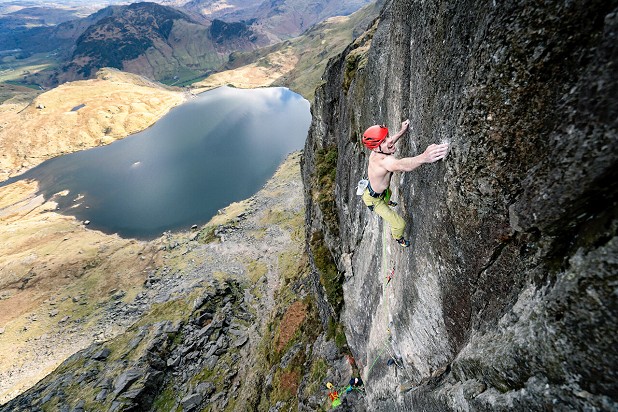
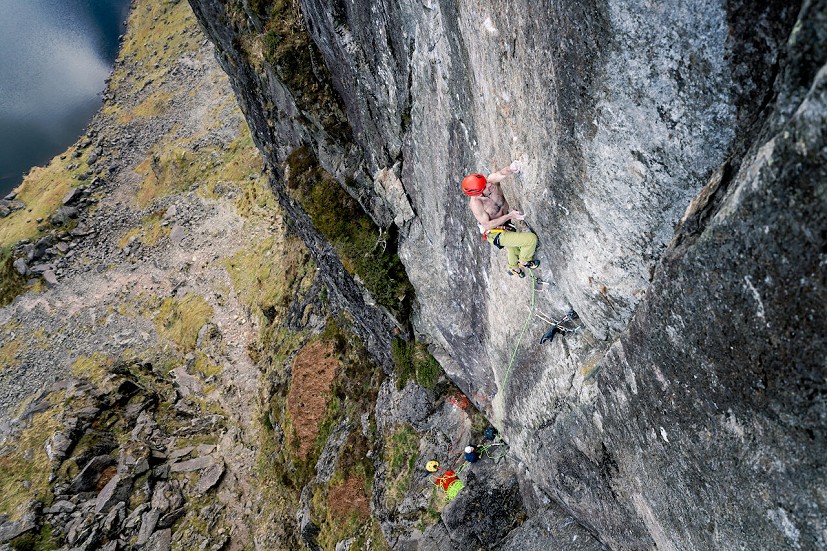
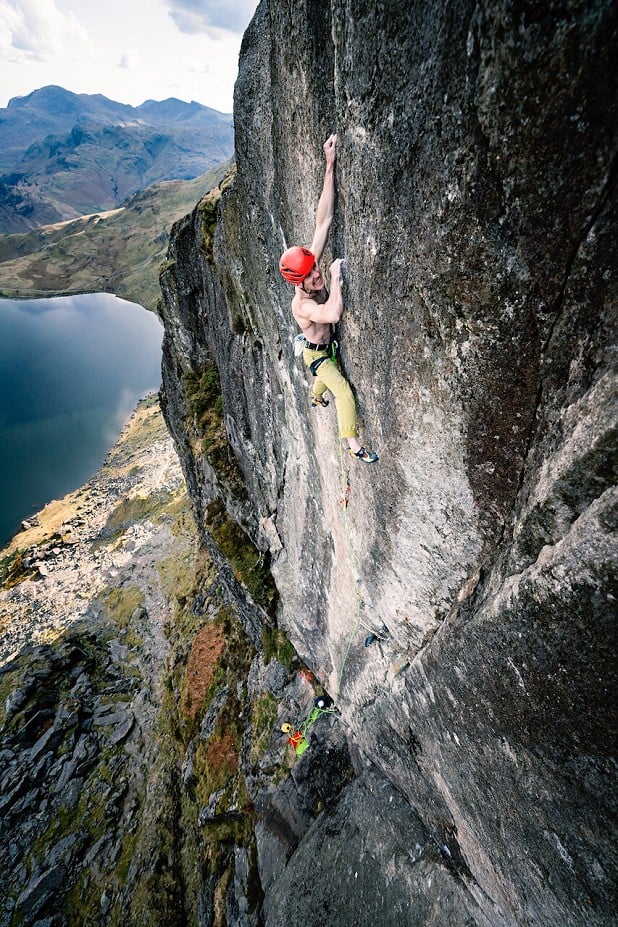
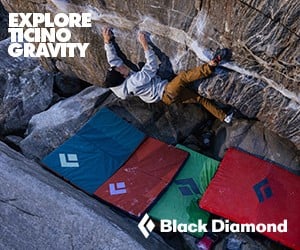



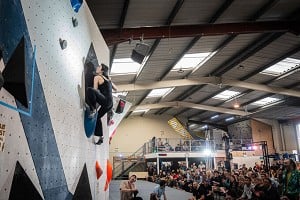
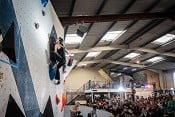



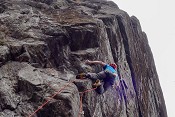
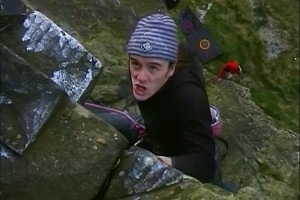
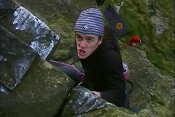
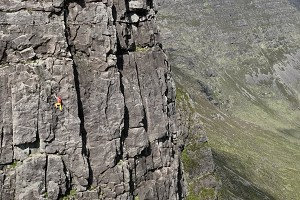
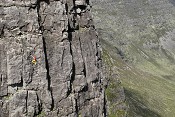
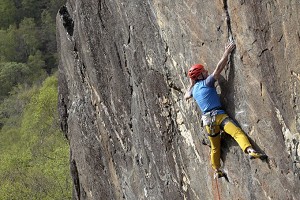
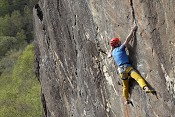

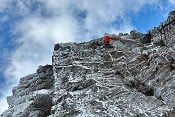

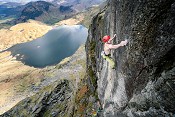
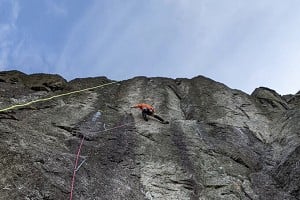
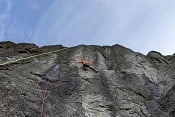

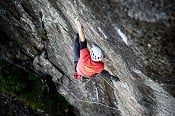
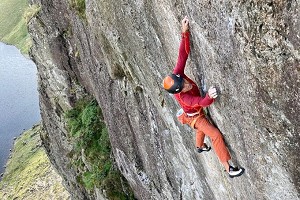
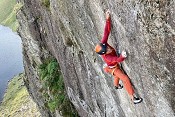
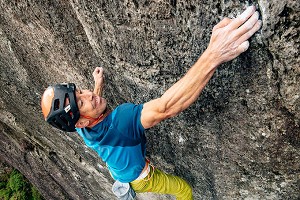
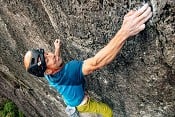
Comments
Chris must be really pleased with that shot. What a cracker.
Another great insight into Lexicon. That’s what I love about following hard UK trad - being 43 and being the youngest ascensionist just goes to show how important that cumulative experience, risk analysis and mental resilience is for performing at the top end. Hats off to the three of ya!
Enjoyed that piece :)
Was thinking the same. Brilliant pic.
Fortunately not an April fool!
Fascinating, insightful interview, and obviously a fantastic bit of climbing. Well done Dave. You've youth on your side!